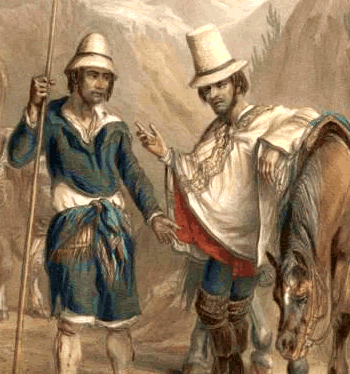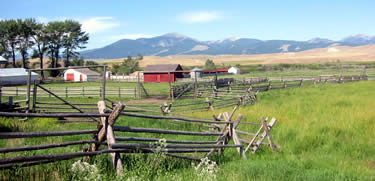|
Los Callejones
Los Callejones is a rural Chilean town located 14km from the city of San Rosendo in the region of Biobio and the homonymous province. The town is known for being home to one of the oldest Malbec wine strains in Chile and South America, having vines more than 150 years old. History The precise year when this area began to be populated is unknown and there are no writings that tell the beginnings of the place, much of the history that exists is the product of the stories that the ancient settlers told their children and that have been transferred from generation to generation. It is said that ''Turkey'' took that name because a family of Arab origin settled in this area of ''San Rosendo Rural'' approximately more than a century ago. The rural arrears currently called ''Turkey'', ''Los Callejones'' and ''La Quebrada'' for a long time were known as one, which was simply named Turkey, the last two being known as ''Los Callejones de Turkey'' and ''La Quebrada de Turkey.'' Years lat ... [...More Info...] [...Related Items...] OR: [Wikipedia] [Google] [Baidu] |
Chile
Chile, officially the Republic of Chile, is a country in the western part of South America. It is the southernmost country in the world, and the closest to Antarctica, occupying a long and narrow strip of land between the Andes to the east and the Pacific Ocean to the west. Chile covers an area of , with a population of 17.5 million as of 2017. It shares land borders with Peru to the north, Bolivia to the north-east, Argentina to the east, and the Drake Passage in the far south. Chile also controls the Pacific islands of Juan Fernández, Isla Salas y Gómez, Desventuradas, and Easter Island in Oceania. It also claims about of Antarctica under the Chilean Antarctic Territory. The country's capital and largest city is Santiago, and its national language is Spanish. Spain conquered and colonized the region in the mid-16th century, replacing Inca rule, but failing to conquer the independent Mapuche who inhabited what is now south-central Chile. In 1818, after ... [...More Info...] [...Related Items...] OR: [Wikipedia] [Google] [Baidu] |
Biobío Region
The Biobío Region ( es, Región del Biobío ), is one of Chile's sixteen regions (first-order administrative divisions). With a population of 1.5 million, thus being the third most populated region in Chile, it is divided into three provinces: Arauco, Biobío and Concepción. The latter contains its capital and largest city, Concepción, a major city and metro area in the country. Los Ángeles, capital of the Biobío Province, is another important city in the region. Geography The Region of the Biobío is bordered on the west by the Pacific Ocean, on the east by Argentina, on the north by the Chilean Region of Ñuble, and on the south by the Chilean Region of Araucanía. The Region has been hit by many Chilean earthquakes, including the most powerful earthquake ever recorded (in 1960) and the great earthquake of 2010. Many communities in the region were greatly affected by the earthquake of 2010 and the subsequent tsunami. That earthquake damaged Talcahuano and D ... [...More Info...] [...Related Items...] OR: [Wikipedia] [Google] [Baidu] |
Chileans
Chileans ( es, Chilenos) are people identified with the country of Chile, whose connection may be residential, legal, historical, ethnic, or cultural. For most Chileans, several or all of these connections exist and are collectively the source of their Chilean identity. Chile is a multilingual and multicultural society, but an overwhelming majority of Chileans have Spanish as their first language and either are Christians or have a Christian cultural background. Therefore, many Chileans do not equate their nationality with ethnicity, but with citizenship and allegiance to Chile. The overwhelming majority of Chileans are the product of varying degrees of admixture between European ethnic groups (predominantly Spaniards and Basques) with peoples indigenous to Chile's modern territory (predominantly Mapuche). Although the historic mestizaje of Europeans and Amerindians is evident across all social strata in the Chilean population, there is a strong correlation between the ratio ... [...More Info...] [...Related Items...] OR: [Wikipedia] [Google] [Baidu] |
San Rosendo
San Rosendo () is a Chilean city and commune in Bío Bío Province, Bío Bío Region. The city of San Rosendo lies on the gentle slopes of a hill overlooking the confluence of the rivers Bío Bío and Laja, which respectively bound the city to the west and south. On the opposite bank of the Laja River is the city of Laja, forming both an incipient conurbation. History San Rosendo was first a fort built by the Royal Governor Martín García Óñez de Loyola in 1593. It was destroyed and burned by the Mapuche in 1655, it recovered later but did not survive the rising of the Mapuche in 1723. The current settlement grew up around the railroad station in the same location in the later 19th century. Demographics According to the 2002 census of the National Statistics Institute, San Rosendo spans an area of and has 3,918 inhabitants (1,930 men and 1,988 women). Of these, 3,249 (82.9%) lived in urban areas and 669 (17.1%) in rural areas. The population fell by 10.4% (4 ... [...More Info...] [...Related Items...] OR: [Wikipedia] [Google] [Baidu] |
Malbec
Malbec () is a purple grape variety used in making red wine. The grapes tend to have an inky dark color and robust tannins, and are known as one of the six grapes allowed in the blend of red Bordeaux wine. In France, plantations of Malbec are now found primarily in Cahors in South West France, though the grape is grown worldwide. It is increasingly celebrated as an Argentine varietal. The grape became less popular in Bordeaux after 1956 when frost killed off 75% of the crop. Despite Cahors being hit by the same frost, which devastated the vineyards, Malbec was replanted and continued to be popular in that area. Winemakers in the region frequently mixed Malbec with Merlot and Tannat to make dark, full-bodied wines, but have ventured into 100% Malbec varietal wines more recently.J. Robinson ''Vines, Grapes & Wines'' pg 198 & 204 Mitchell Beazley 1986 A popular but unconfirmed theory claims that Malbec is named after a Hungarian peasant who first spread the grape variety throu ... [...More Info...] [...Related Items...] OR: [Wikipedia] [Google] [Baidu] |
South America
South America is a continent entirely in the Western Hemisphere and mostly in the Southern Hemisphere, with a relatively small portion in the Northern Hemisphere at the northern tip of the continent. It can also be described as the southern Subregion#Americas, subregion of a single continent called Americas, America. South America is bordered on the west by the Pacific Ocean and on the north and east by the Atlantic Ocean; North America and the Caribbean Sea lie to the northwest. The continent generally includes twelve sovereign states: Argentina, Bolivia, Brazil, Chile, Colombia, Ecuador, Guyana, Paraguay, Peru, Suriname, Uruguay, and Venezuela; two dependent territory, dependent territories: the Falkland Islands and South Georgia and the South Sandwich Islands; and one administrative division, internal territory: French Guiana. In addition, the ABC islands (Leeward Antilles), ABC islands of the Kingdom of the Netherlands, Ascension Island (dependency of Saint Helena, Asce ... [...More Info...] [...Related Items...] OR: [Wikipedia] [Google] [Baidu] |
Farmer
A farmer is a person engaged in agriculture, raising living organisms for food or raw materials. The term usually applies to people who do some combination of raising field crops, orchards, vineyards, poultry, or other livestock. A farmer might own the farm land or might work as a laborer on land owned by others. In most developed economies, a "farmer" is usually a farm owner ( landowner), while employees of the farm are known as ''farm workers'' (or farmhands). However, in other older definitions a farmer was a person who promotes or improves the growth of plants, land or crops or raises animals (as livestock or fish) by labor and attention. Over half a billion farmers are smallholders, most of whom are in developing countries, and who economically support almost two billion people. Globally, women constitute more than 40% of agricultural employees. History Farming dates back as far as the Neolithic, being one of the defining characteristics of that era. By the Bronze Age, ... [...More Info...] [...Related Items...] OR: [Wikipedia] [Google] [Baidu] |
Ranch
A ranch (from es, rancho/Mexican Spanish) is an area of land, including various structures, given primarily to ranching, the practice of raising grazing livestock such as cattle and sheep. It is a subtype of a farm. These terms are most often applied to livestock-raising operations in Mexico, the Western United States and Western Canada, though there are ranches in other areas.For terminologies in Australia and New Zealand, see Station (Australian agriculture) and Station (New Zealand agriculture). People who own or operate a ranch are called ranchers, cattlemen, or stockgrowers. Ranching is also a method used to raise less common livestock such as horses, elk, American bison, ostrich, emu, and alpaca.Holechek, J.L., Geli, H.M., Cibils, A.F. and Sawalhah, M.N., 2020. Climate Change, Rangelands, and Sustainability of Ranching in the Western United States. ''Sustainability'', ''12''(12), p.4942. Ranches generally consist of large areas, but may be of nearly any size. In t ... [...More Info...] [...Related Items...] OR: [Wikipedia] [Google] [Baidu] |
Claro River (Teno)
The Claro River is a river of Chile located in the Maule Region. It rises in the Andes, at the confluence of the Los Cajones River and Del Planchón River. It empties into the Teno River near the city of Los Queñes. In February 1991, eruptions from the volcanic complex of Planchón-Peteroa (Planchón (3977 m) and Peteroa (4101 m)) 35 km southeast Los Queñes contaminated the water and killed large numbers of fish. It was the former training site of the U.S. Olympic slalom kayak team. See also *List of rivers of Chile This list of rivers of Chile includes all the major rivers of Chile. See each article for their tributaries, drainage areas, etc. Usually significant tributaries appear in this list, under the river into which they drain. Rivers by name Following ... Notes References * https://web.archive.org/web/20151123130725/http://www.sinia.cl/1292/articles-46115_recurso_teno.pdf * http://oldpirates.net/Chile/Teno/old_pirates_chile_ct-d.htm Rivers of Chile Rivers ... [...More Info...] [...Related Items...] OR: [Wikipedia] [Google] [Baidu] |



